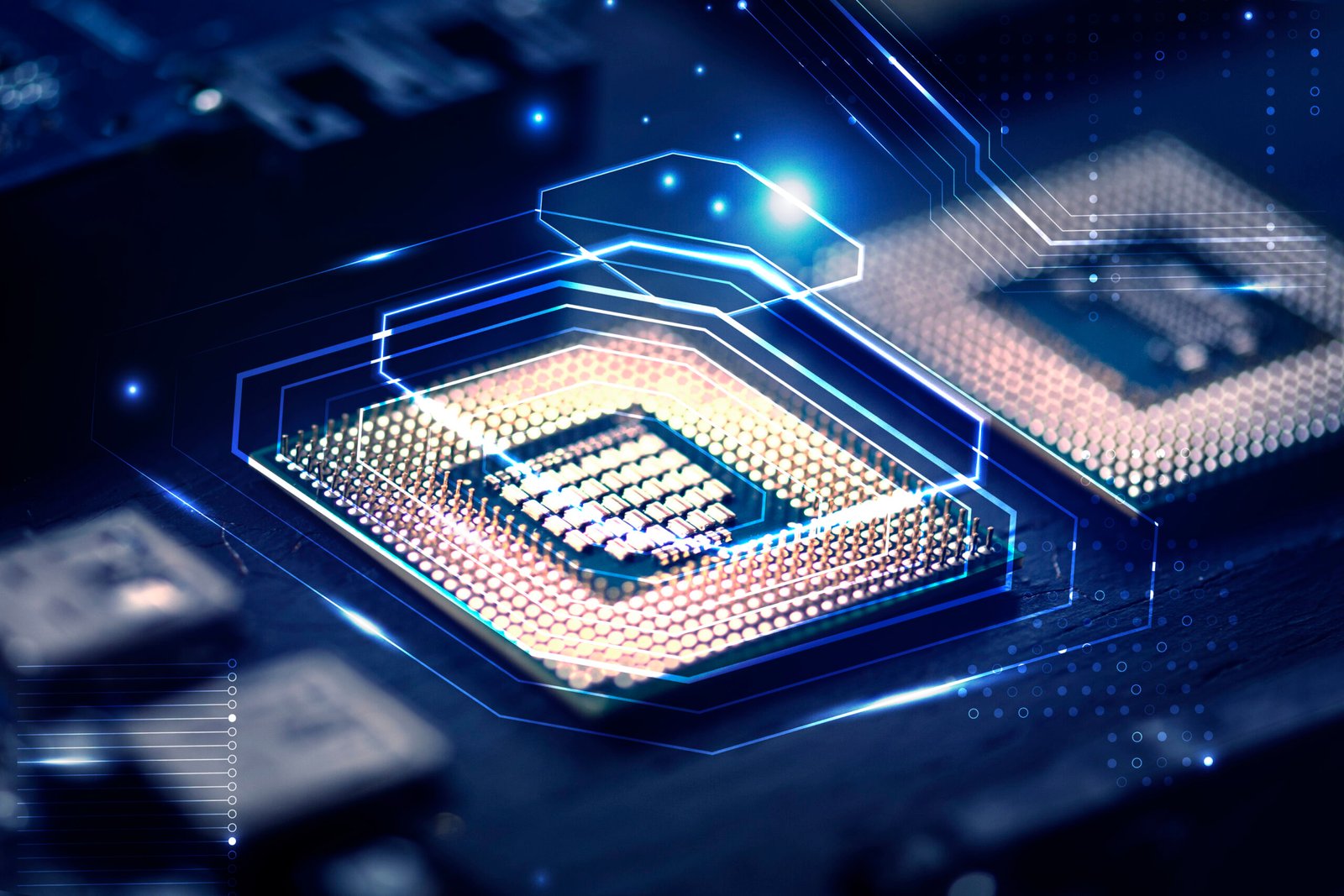What Is a Microprocessor?
A microprocessor is like the brain of your tech-savvy robot friend — tiny, powerful, and constantly thinking. This little chip takes in data, crunches numbers, and makes split-second decisions to keep everything running smoothly. In drones and robotics, it’s the command center for movement, sensors, and decision-making — basically, the wizard behind the curtain.
Key Roles of a Microprocessor in Robotics and Drones:
- Interprets sensor data (Is that a wall or just a really enthusiastic plant?)
- Controls motors and servos
- Makes navigation decisions (Left? Right? Crash into that table?)
- Handles real-time communication
- Enables AI features like object detection and obstacle avoidance
How Microprocessors Power Drones
Drones aren’t just buzzing selfie machines. They’re flying robots, loaded with tech and powered by—you guessed it—a microprocessor.
In a Drone’s Daily Life, the Microprocessor:
- Stabilizes flight using gyros and accelerometers
- Manages GPS for navigation and altitude
- Processes camera data (say cheese!)
- Avoids objects like trees, birds, or your cousin Tim
- Talks wirelessly with controllers and smartphones
Popular drone-friendly microprocessors: STM32, Raspberry Pi, NVIDIA Jetson Nano
Microprocessors in Robotics: Not Just About Wheels
In the land of robots, microprocessors are the brains behind walking, grabbing, beeping, and talking. They’re essential for real-time decision-making — because your robot shouldn’t just wander into a wall.
Microprocessor Applications in Robotics:
- Motion control for wheels, legs, arms, or claws
- Pathfinding and obstacle avoidance
- Voice command processing (“Bring me snacks!”)
- Machine vision and AI interpretation
- Sensor feedback loops (ultrasonic, IR, or camera-based)
Robots with microprocessors don’t just move — they think, react, and sometimes sass back.
STEM Lesson Plan: Microprocessors in Drones & Robotics
Designed for middle and high school students, this lesson plan brings microprocessors out of the mystery zone and into students’ hands.
Objective: Get students to understand and use microprocessors to control drones and robots.
Materials Needed:
- Microprocessor boards: Raspberry Pi, Jetson Nano
- Drone/robot kits
- Sensors (ultrasonic, gyroscope, GPS)
- Motors, propellers, wheels
- Laptops w/ Arduino IDE or Python
- Breadboards, wires, batteries
Lesson Breakdown:
- Intro to Microprocessors (20–30 mins)
- What are microprocessors?
- Where do we see them? (Spoiler: Everywhere.)
- Key idea: Input → Process → Output
- What are microprocessors?
- Hands-On: Move a Robot (60 mins)
- Hook up Arduino/Raspberry Pi to motors
- Program basic motion (forward, reverse, spin like a Beyblade)
- Add an obstacle sensor and make it react
- Hook up Arduino/Raspberry Pi to motors
- Drone Sim & Talk (45 mins)
- No drone? No problem — use a flight simulator
- Discuss how real-time data keeps drones flying
- Optional: Program a DJI Tello EDU to flip or hover
- No drone? No problem — use a flight simulator
- Mini Project Challenge (90–120 mins)
- Small groups build a microprocessor-controlled robot
- Goals: follow a line, avoid walls, chase a ball — sky’s the limit
- Let advanced groups explore AI with Raspberry Pi
- Small groups build a microprocessor-controlled robot
- Wrap-Up & Real World (30 mins)
- Show off student projects
- Discuss drone/robot use in agriculture, medicine, delivery, disaster recovery, and spy missions (just kidding… maybe)
- Show off student projects
Why Microprocessor Projects Rock in STEM
| Skill | Real-Life Application |
| Coding | C++, Python, Scratch |
| Engineering | Build, test, troubleshoot |
| Critical Thinking | Logic + behavior mapping |
| Problem-Solving | Debug and adapt in real time |
| Teamwork | Collaborate on builds and code |
Bonus: Students get a peek into tech careers they didn’t even know existed.
Best Microprocessors for Classroom Drones & Bots
| Microprocessor | Best For | Education Level |
| Raspberry Pi 4 | AI, camera work, full-on smart robots | High School |
| STM32 | Professional-grade drone control | Robotics Clubs |
| Jetson Nano | AI drones, vision recognition | Advanced/HS |
Real-World Microprocessor Marvels
- AI Drones: Jetson Nano spotting people or monitoring crops
- Delivery Robots: Raspberry Pi + GPS = food at your doorstep
- Line-Following Bots: Arduino and IR sensors FTW
- Air Quality Drones: STM32 monitoring pollution levels
DIY Drone (or Class Project Flight Squad)
- Pick your flight controller (STM32 or Pi-based)
- Attach sensors (gyro, GPS, barometer, unicorn horn optional)
- Hook up motors/props
- Install firmware (ArduPilot, PX4, etc.)
- Program its behavior (hover, land, spin in style)
- Test… and maybe dodge a few trees
Classroom-friendly kits: DJI Tello EDU, Robolink CoDrone EDU
The Bigger Picture: Why Microprocessors Matter in STEM
Using microprocessors in education isn’t just flashy — it’s future-proof.
- Introduce real-world engineering
- Explore AI & automation early
- Build cross-disciplinary confidence
- Inspire tomorrow’s roboticists, pilots, and problem-solvers
Wrap-Up: Microprocessors = Classroom Superpower
Microprocessors are the unsung heroes of modern robotics and drones. Teaching students how they work is like handing them the keys to the future of tech. Whether they’re flying a drone, building a bot, or coding something that talks back, they’re learning to control, create, and innovate.
So plug in those boards, fire up those sensors, and let your classroom take off — one microprocessor-powered project at a time.

